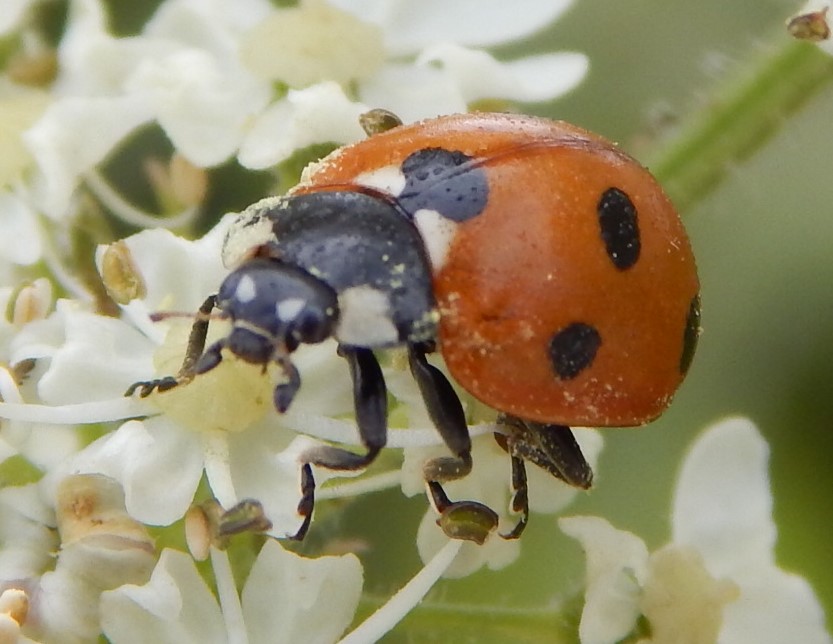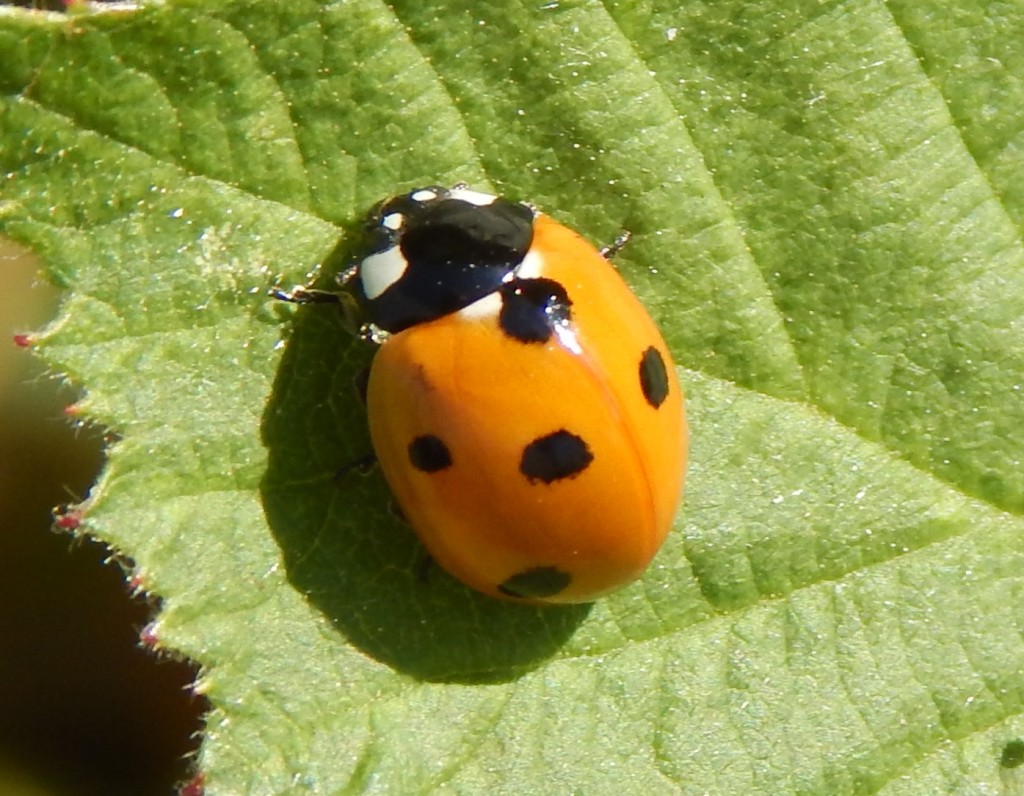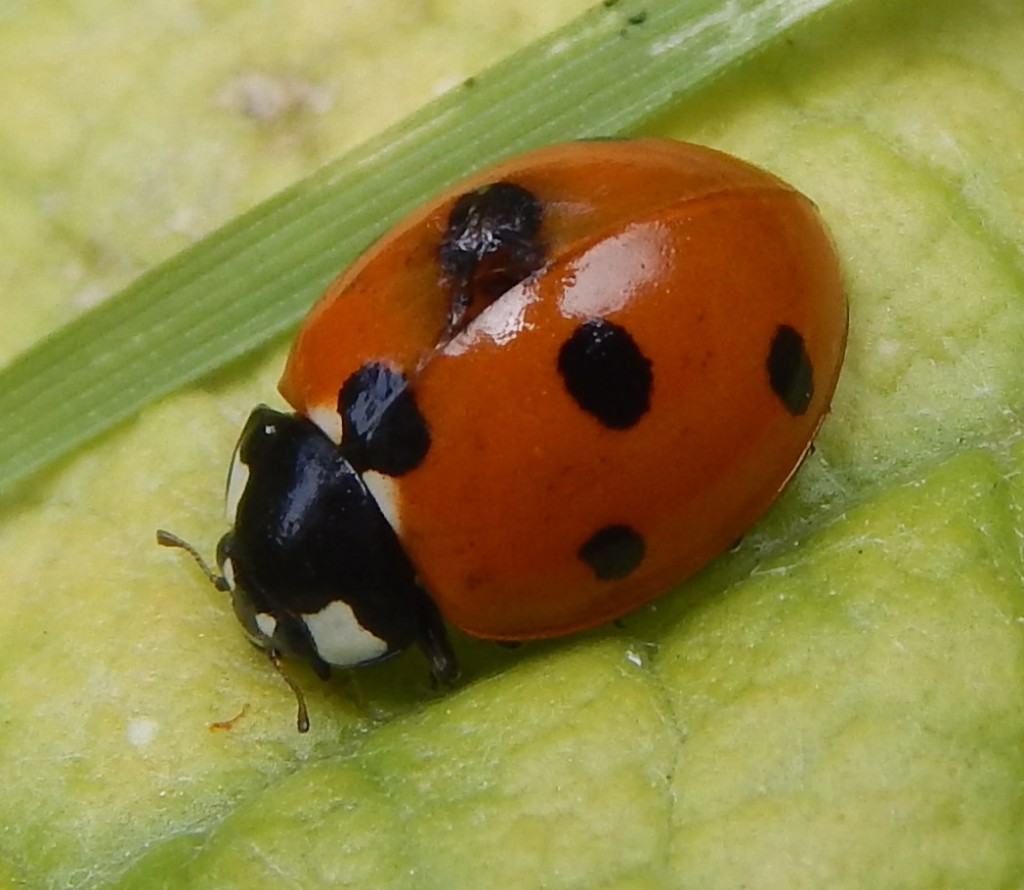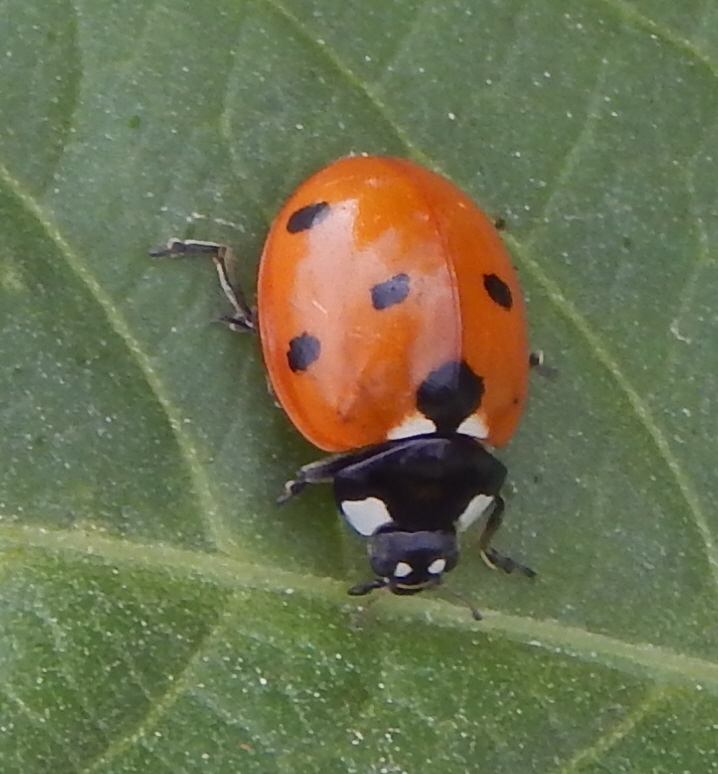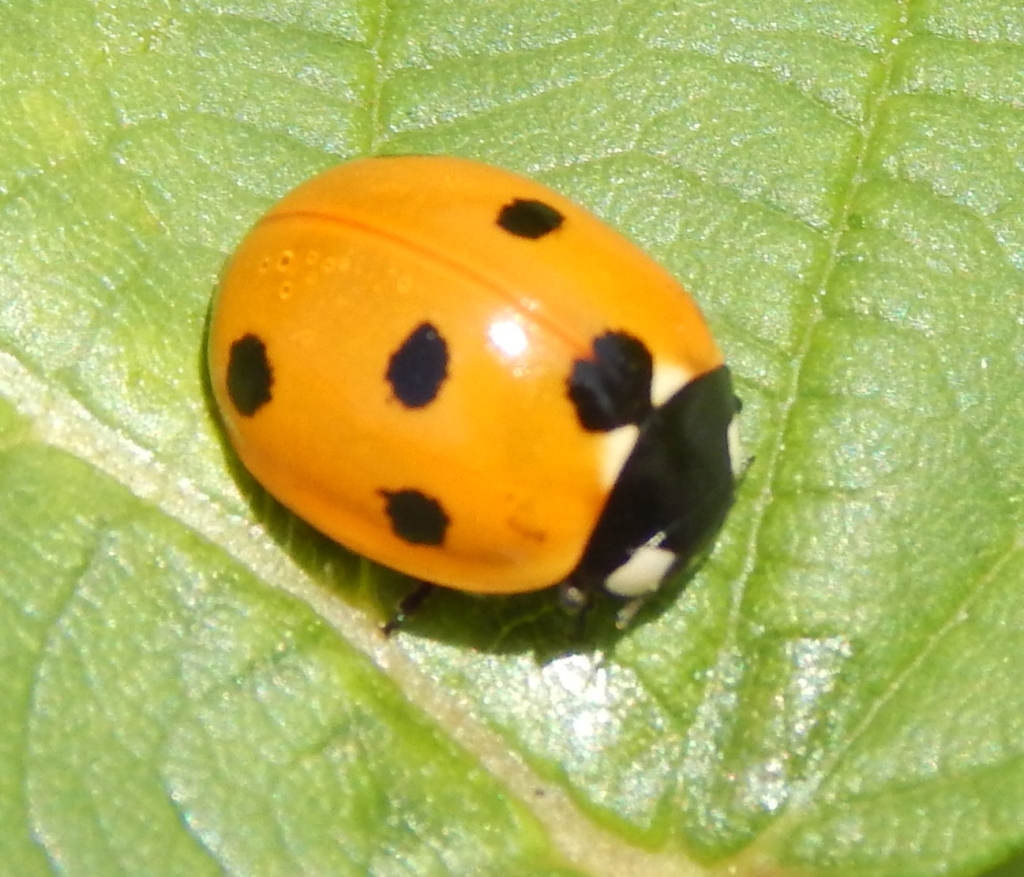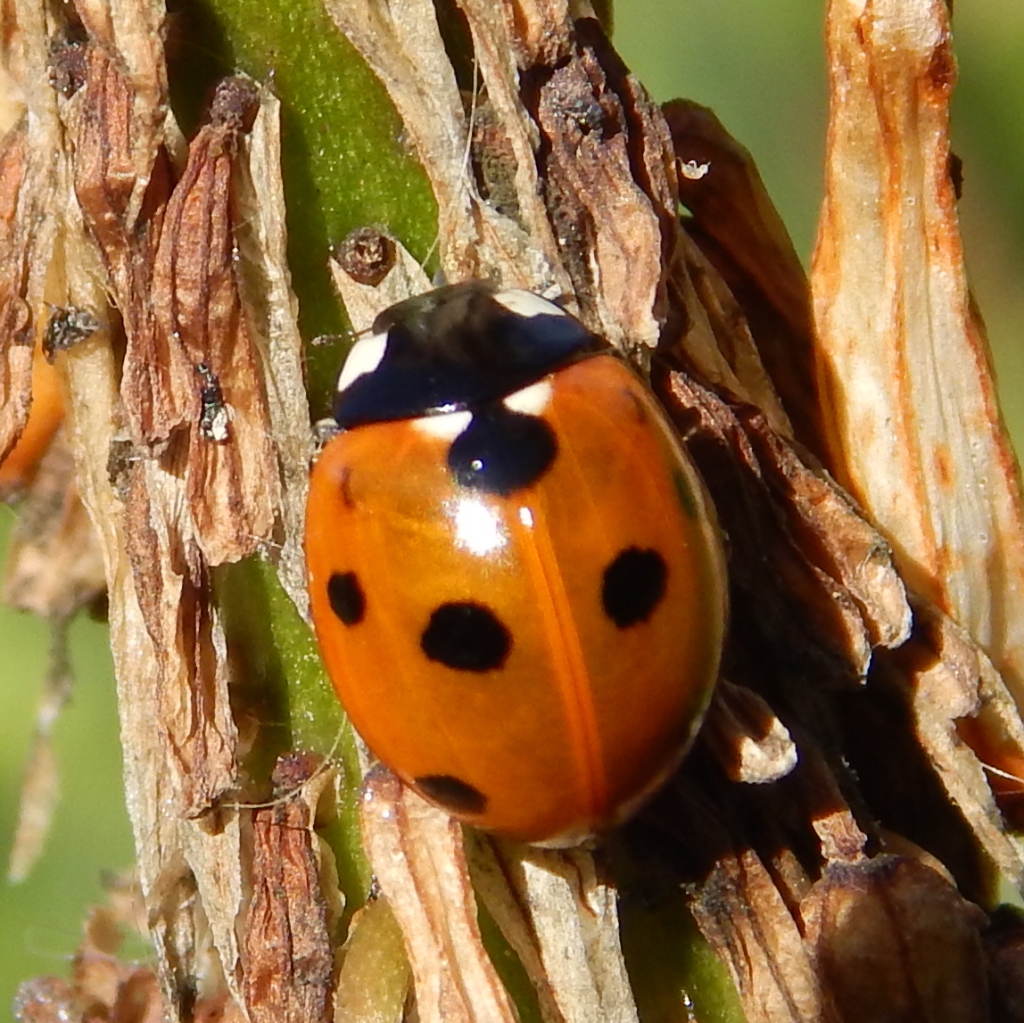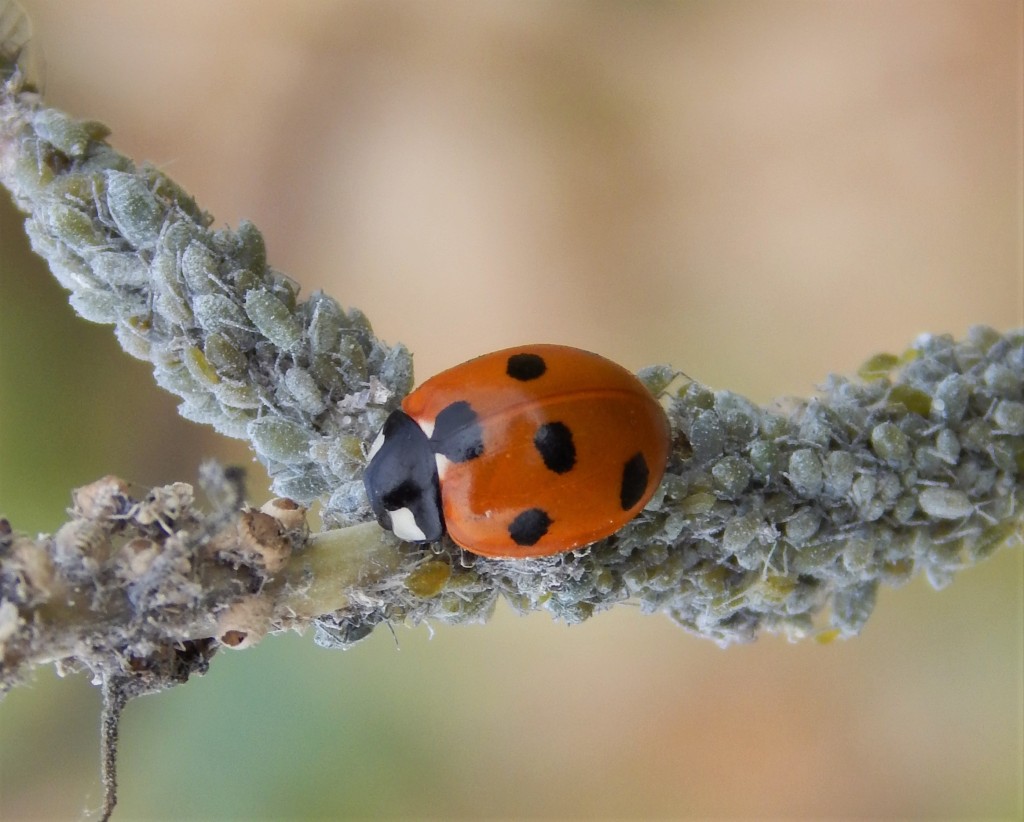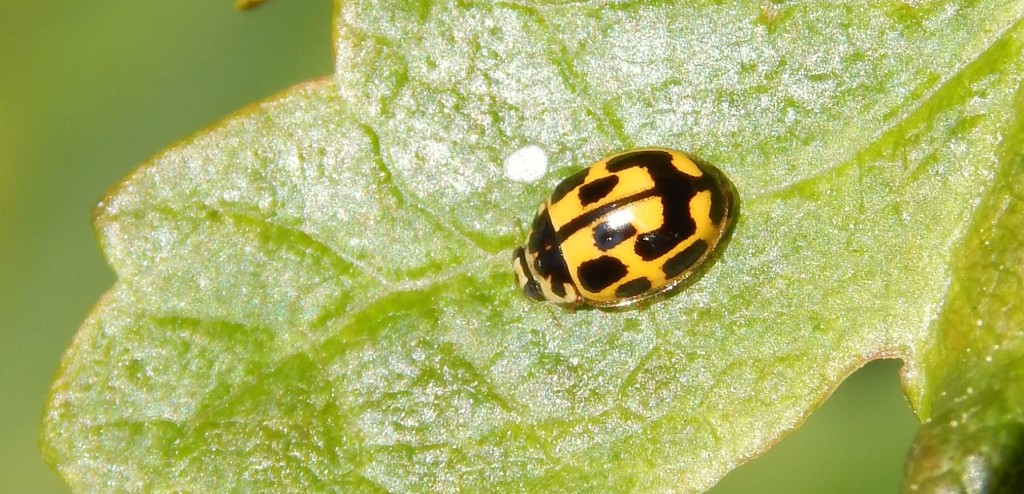
[278] Propylea quattuordecimpunctata, 14-spot Ladybird
Introduction
Ladybirds can have very long scientific names that include Latin versions of numbers but you can call this beetle Propylea 14-punctata, the 14-spot (or 14-spotted) Ladybird. It is also sometimes known as a P-14. (Let’s not get too worried about hyphenation or capitalization or ‘fourteen’ instead of ‘14’.) It is rarer and much smaller than the two ladybird species we have already met. (You can read about labybirds, ladybugs or lady beetles in [086] the 7-spot Ladybird. We have also seen [169] the Harlequin Ladybird, which comes in many coloration forms.)
I will also consider briefly all our other native species of ladybirds.
Taxonomy
Kingdom – Animals
Phylum – Arthropods
Class – Insects
Order – Coleoptera (Beetles)
Family – Coccinellidae
Subfamily – Coccinellinae
Tribe – Coccinellini
Genus – Propylea
Scientific Name – Propylea quattuordecimpunctata
See text for other species
Name
The nearest I can find to Propylea is the Latin propylaeum, the entrance to a temple, coming from Ancient Greek. I don’t why the name was used but the spelling is no surprise.
Ladybirds
You have to start by noting that many ladybirds are named by a number of spots, even when their markings are only loosely like spots. Also note that most species have many colour variations – the base colour, the spot colour and the number, location and sizes of the spots may vary.
You are unlikely to find any of these minor species of ladybirds. They are less common and smaller. I won’t say much about the individual species.
14 Spot
Propylea quattuordecimpunctata, the 14-spot Ladybird comes in over a hundred colour and pattern varieties, some of which are from light yellow to orange with fourteen square black spots. It is native to all of Eurasia, except South-East Asia, and northern Africa. Often the dark spots enlarge and merge together so it may look black with twelve small yellow spots.
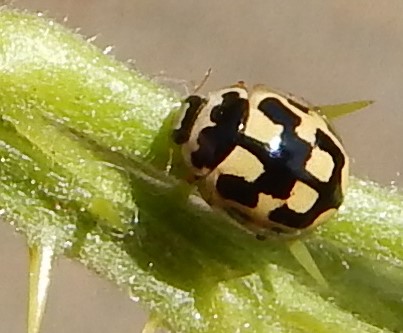
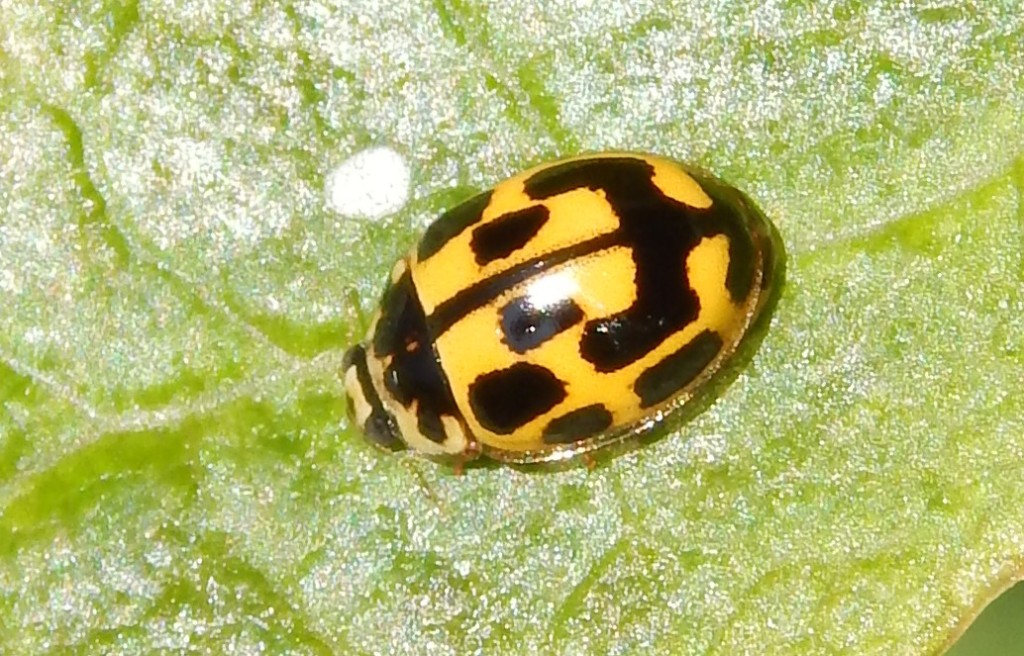
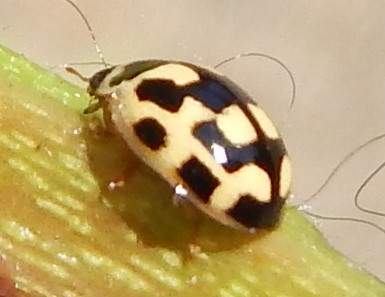
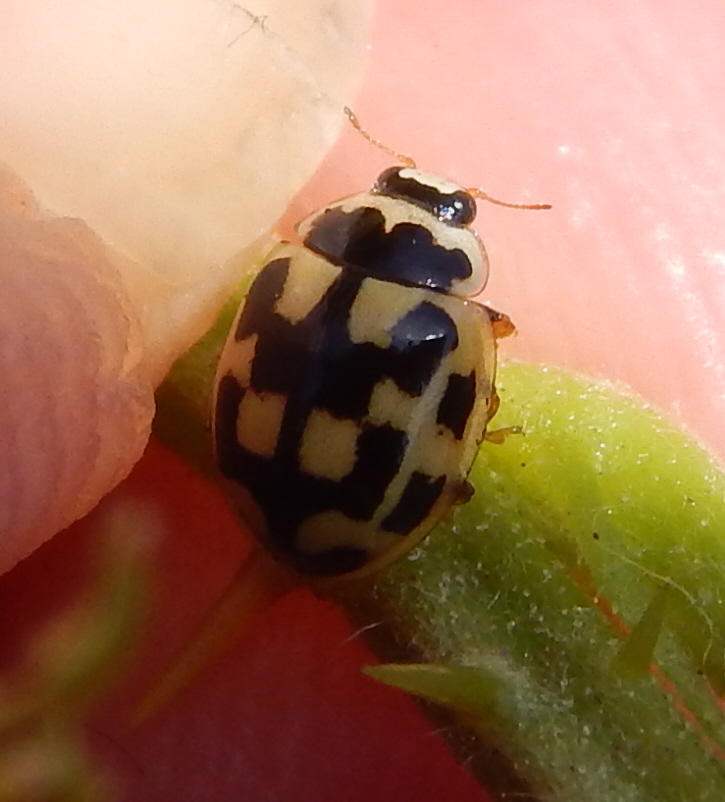
They may be found in parks and gardens and, like most ladybirds, they eat aphids and other small insects. All ladybird larval species look similar apart from some variation in colour.
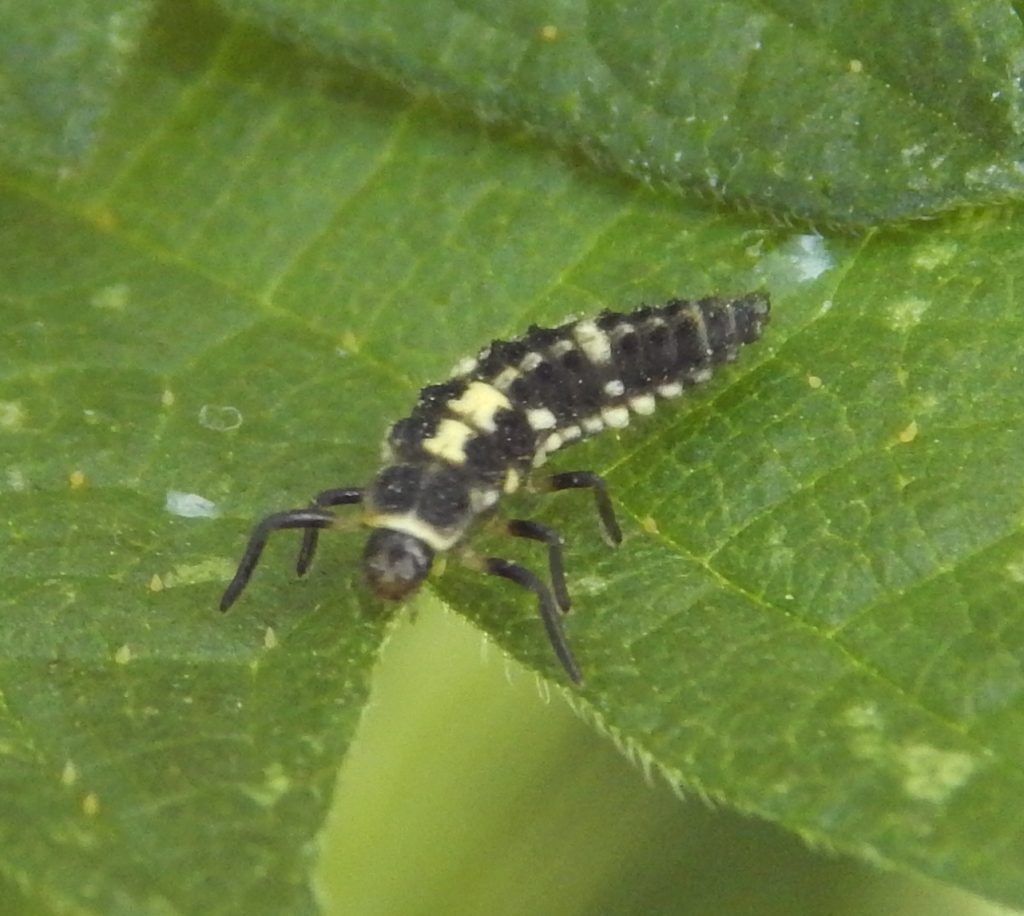
11 Spot
Coccinella undecimpunctata, (or 11-punctata,) the Eleven Spot Ladybird, is similar to its close relative the Seven Spot.
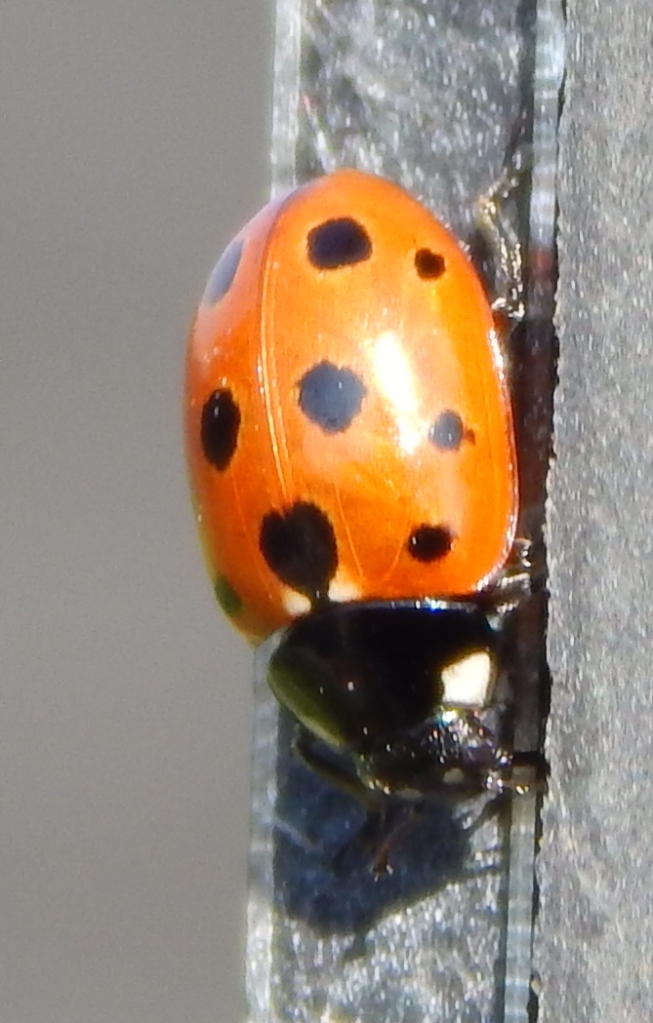
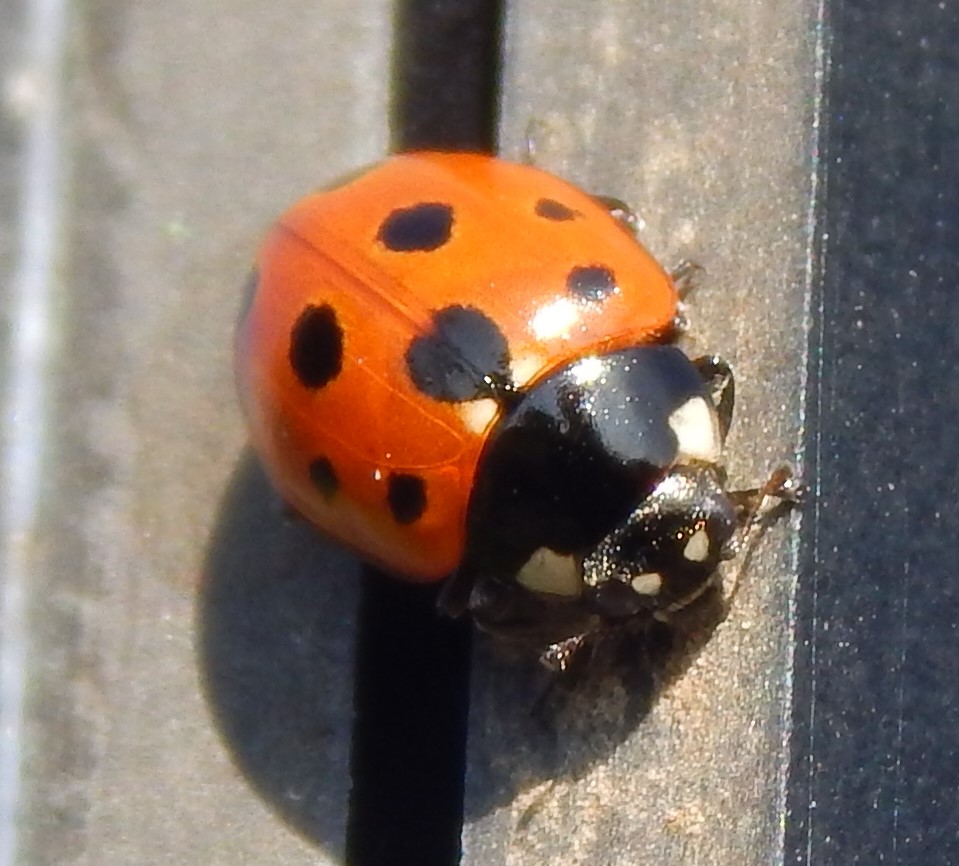
16 Spot
Tytthapsis sedecimpunctata, (or 16-punctata,) the Sixteen Spot Ladybird, is a smaller ladybird, cream coloured. It has a dark central line in addition to its dark spots.
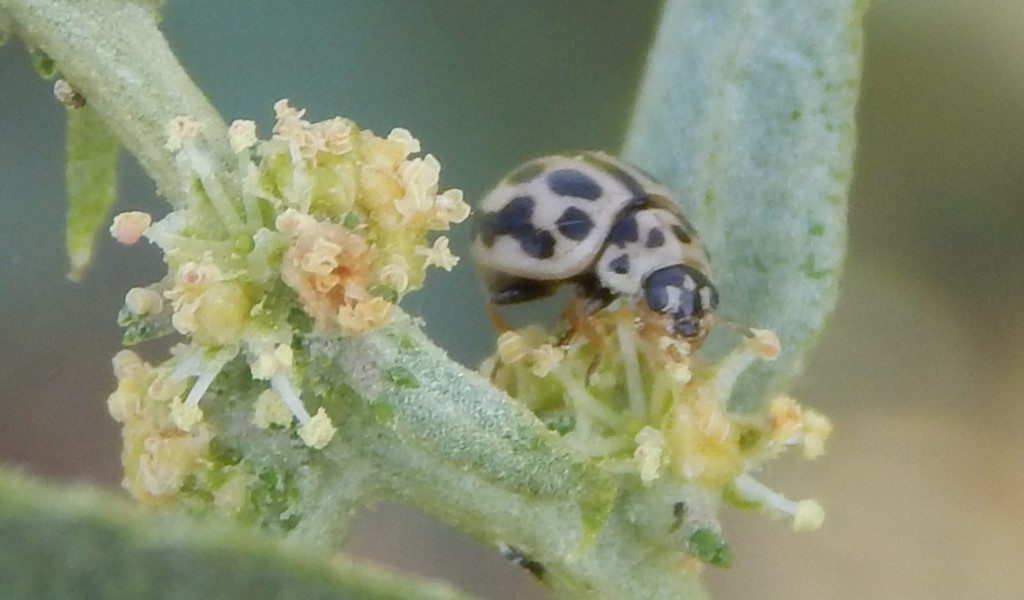
Two Spot
Adalia bipunctata, the Two Spot Ladybird, is a small ladybird with many colour forms. The most common variety is red with two black spots.
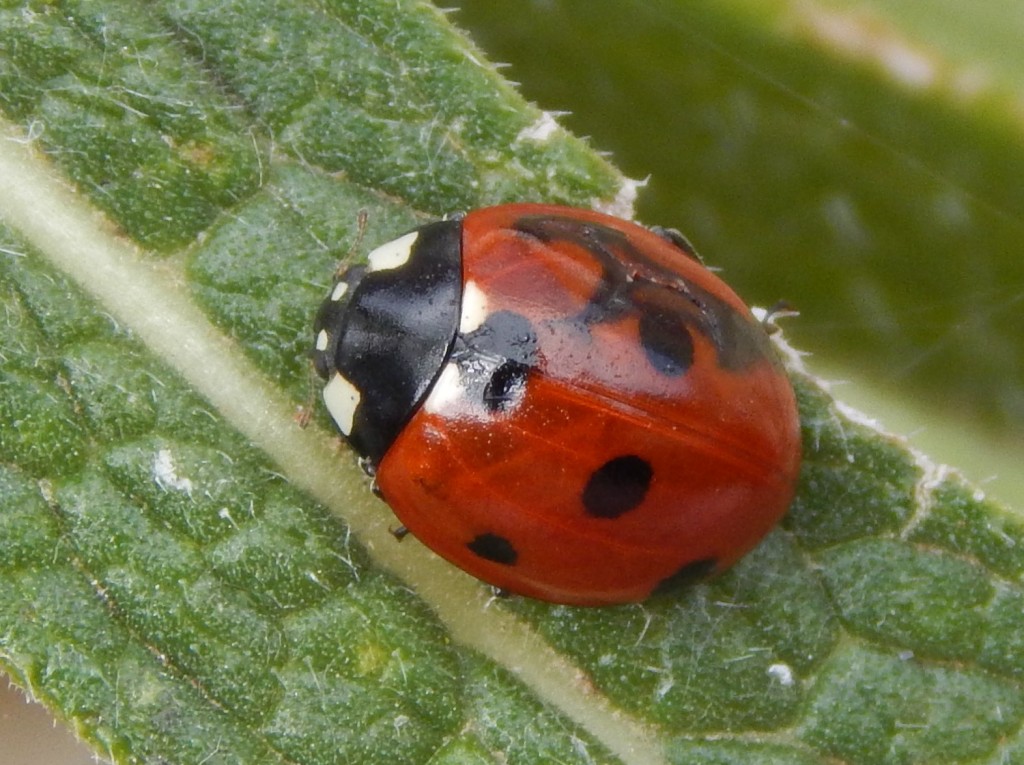
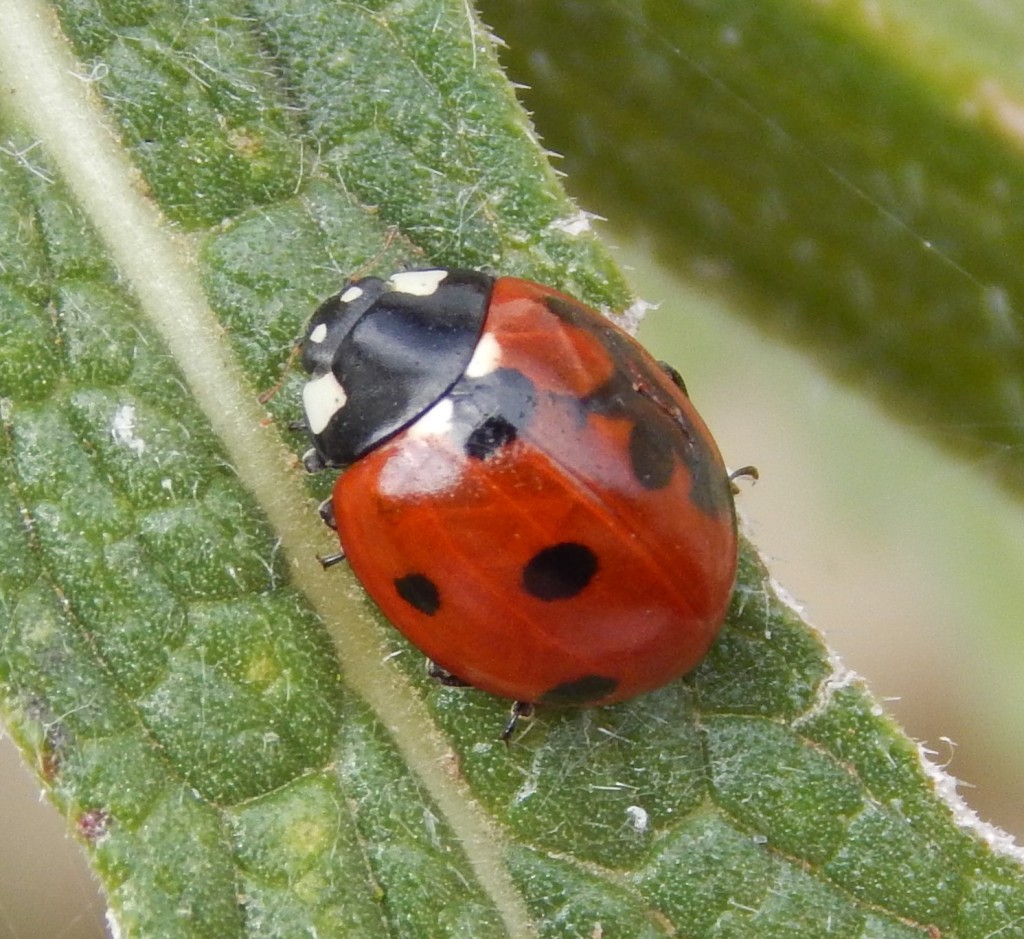
Other forms include types having black elytra with four or six red spots.
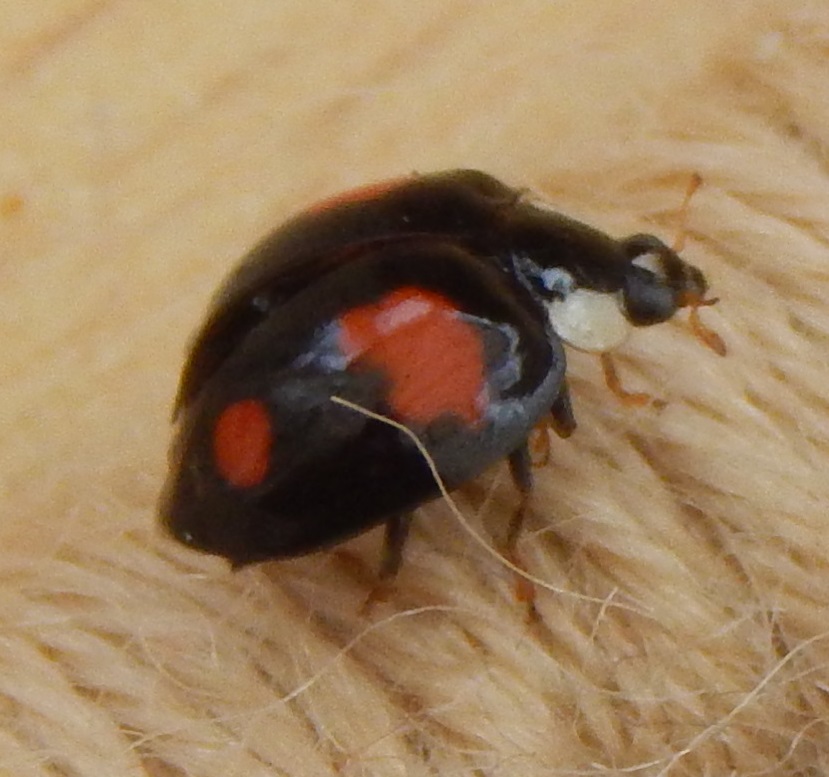
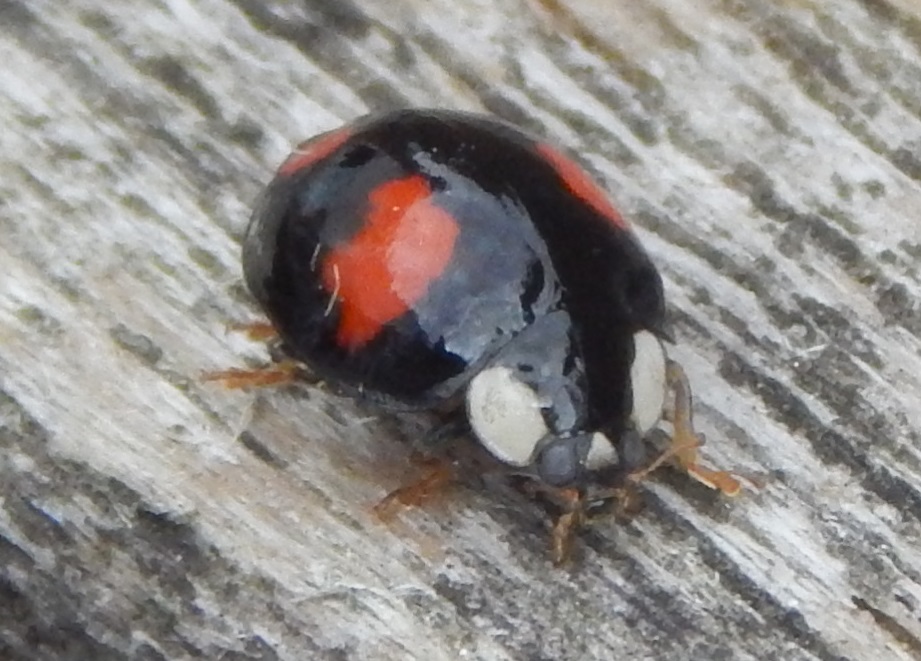
Cream Streaked
Harmonia quadripunctata is known as the Cream-streaked Ladybird or the Four Spot Ladybird. Like its sister species, the Harlequin, it has several colour forms. These are based on 18 spots, but not all of these always occur. Often just two each at the edges give it the name Four Spot.
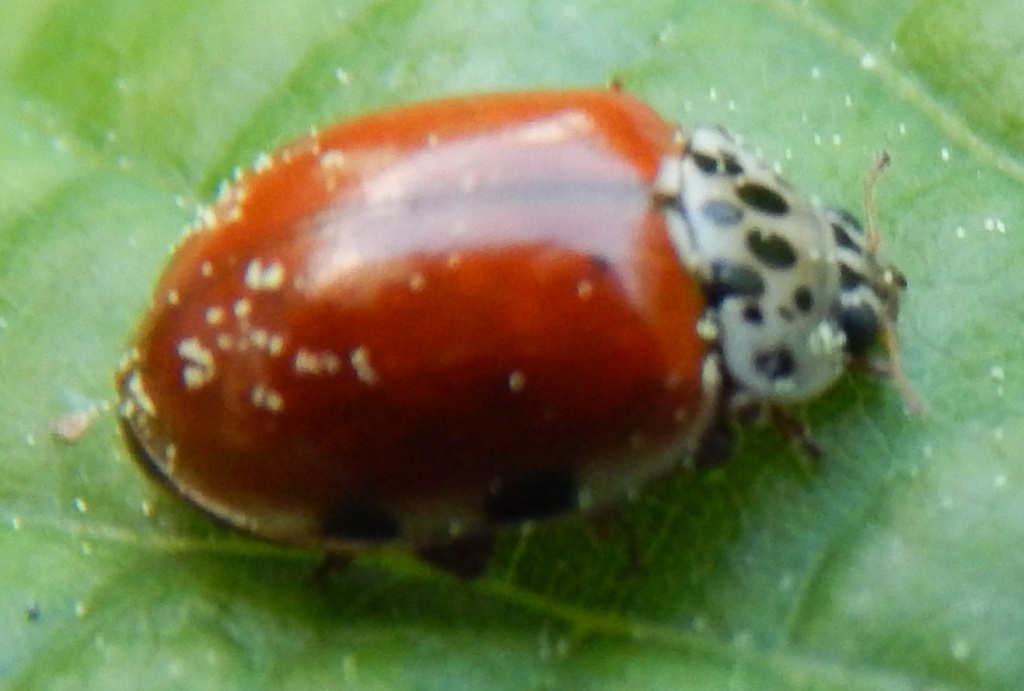
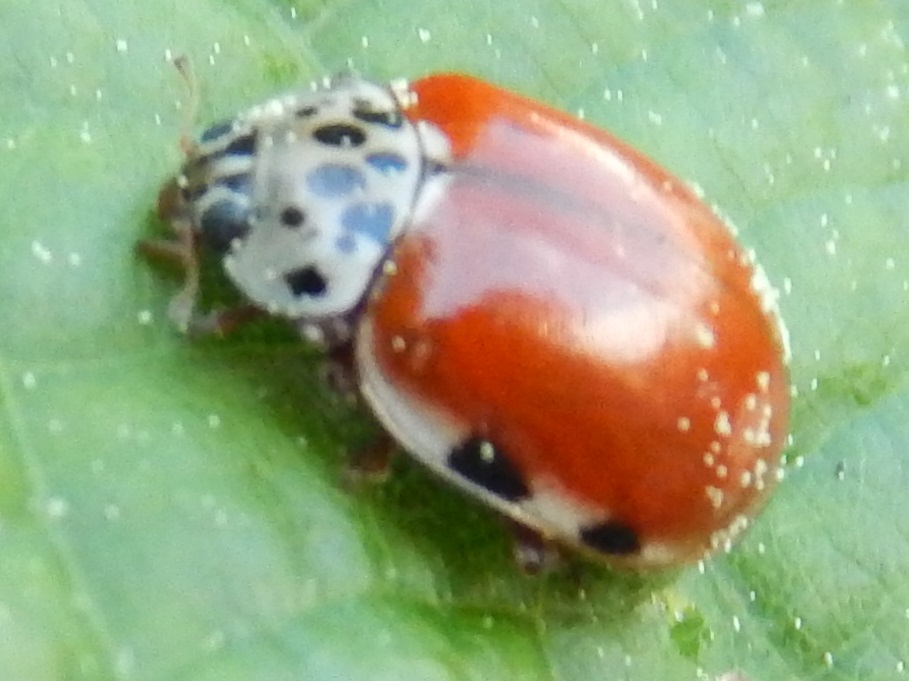
Other Notes
Use of abbreviated forms such as 14-punctata gets round the difficulty of mastering Latin spelling. While the species epithet quattuordecimpunctata is used, quatuordecimpunctata is also common. The first of these looks like more accurate Latin but I am not sure which one is officially correct. Both seem to be used. (There is no requirement for scientists to get the spelling correct and many mis-spellings have become official. Propylea looks like a mis-spelling)
See also
About fifty species of ladybirds may be found in Britain but most are quite rare.
We are coming to the end of our blogs on beetles. Just two more to come, one of which will include some leftovers.

